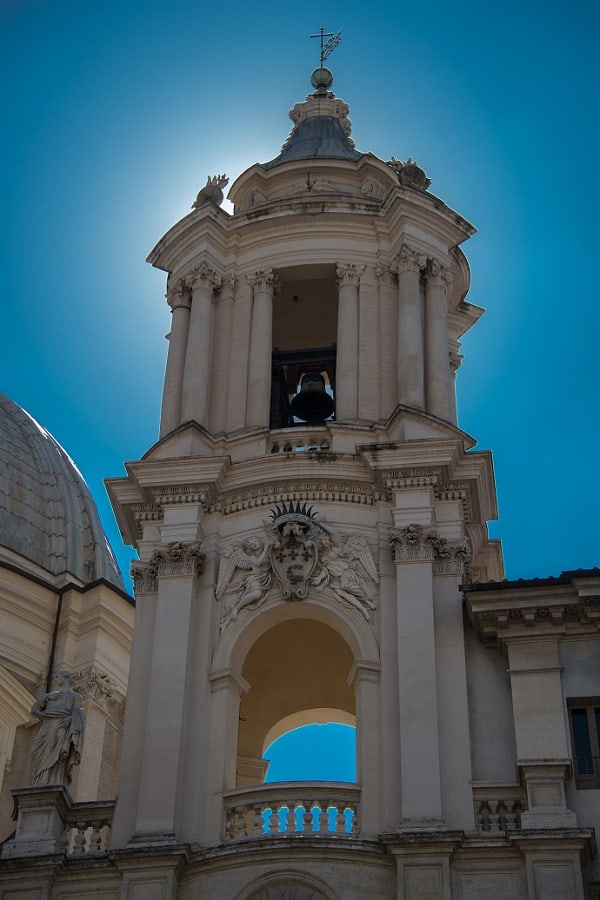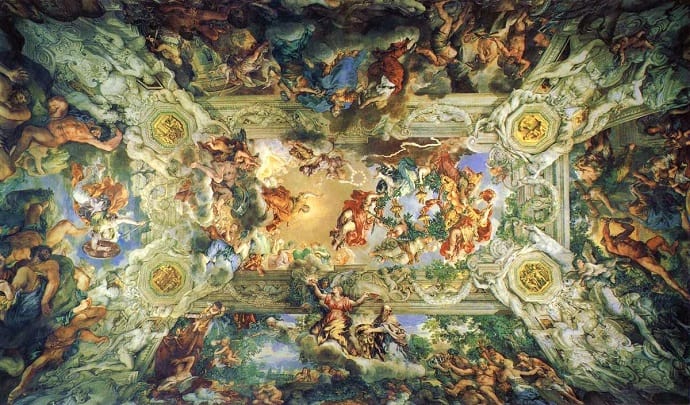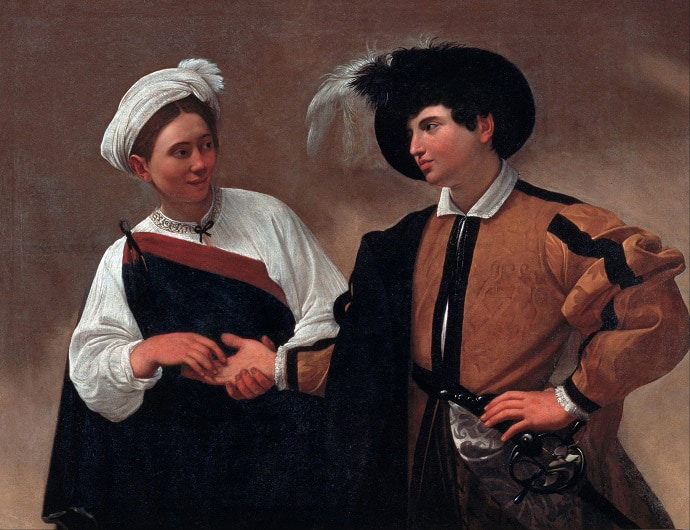Discover Baroque Rome
Dozens Baroque masterpieces wait to be seen in Rome…or to be walked through, given many of the city’s spaces are Baroque constructs. In other words, ‘Movere, docere, delectare’ or move, instruct, delight was the Baroque dictum of urban planning. City as theatre.
Via Sistina, and Via Urbana, named after a Barberini another are two of the more renowned Baroque streets. Outdoing both is Piazza Navona: Bernini’s fountains perform 24/7, with Borromini’s curvacious St. Agnese facade as the backdrop. Along via del Rinascimento, Borromini’s Oratory facade bends brick like putty, welcoming visitors to the inner rooms until July 26 for a special tour.

INDOOR HEAVENS
Yet for Baroque at its most extravagant one must step indoors. From the Baroque twins at one end of the Corso to S. Caterina dei Catinari with Cortona’s 12 foot altarpiece at the other, a galaxy of churches merge.
The architectures’ stucco, sculpture, painting, fresco, gold and silver work, marble of every shade and colour wends, splays and sometimes bursts into another in accordance with the Baroque ideal of ‘artistic unity.’
The church ceilings in the Gesù and Saint Ignazio churches offer views of heaven, as well as a downward hell-bound pack of heretics. The Sant’Ignazio , in celebrating the saint’s arrival in paradise, also comes with a splendid dome. Or seems to. That interplay of light of shadow among the vaulted stonework and lanterns is flat painted wood – a sheer ‘trompe d’oeil’, one of Baroque’s special effect.
For a real dome – Rome’s second biggest – visit Saint Andrea della Valle which another Baroque master, Lanfranco, throngs with angels. Lanfranco’s rival, Domenico Ghirlandaio designed the windows and, with its Call of Andrew, the wonderful apse behind. .

Palazzo Barberini
MYTHS REBOOTED
Though the Counter-Reformation was a driving force, the Baroque could also be unabashedly pagan. Indeed its first absolute masterpiece was the Palazzo Farnese ceiling painted for Cardinal Odoardo Farnese’s brother’s marriage. The Carracci cousins depict the Greek gods and the pleasures of almost every type of love but the Christian one.
Silenus puts in an appearance, only to be pop up again in Pietro Cortona’s Palazzo Barberini ceiling, stealing the scene from the official subject of Divine Providence. Other mythically charged moments would include Ribera’s ‘Venus and Adonis’ in Palazzo Corsini, then, next door, Salvator Rosa’s giant Prometheus being eaten by a vulture, the Baroque containing a theatre of cruelty to make Quentin Tarantino eat his scripts.

Musei Capitolini
LOW LIFE
For all its hankering after the sublime, the Baroque also introduced a new fascination with low life or ‘Bassifondi’. Out-shining any number of saints, gods or cardinals, Galleria Colonna features Annibale Carracci’s solitary ‘Bean eater’. In the Capitoline museum Caravaggio’s “lowlife” is a gypsy relieving a young blade of his ring while pretending to read his palm. Religious, pagan, high class or lowlife, the common Baroque denominator is its capture of the instant of maximum tension. On the main wall, Guercino displays not one moment but two: in the lower half, Saint Peter’s daughter is placed into the grave by the most monumental of gravediggers, in the upper half she is received in Paradise against a backdrop of blue – a whole chiaroscuro in itself. To echo Bernini, ‘the magical art through which one manages to deceive the sight so as to amaze…’
BAROQUE’S BIG BANG
Within a century (1600-1700) Baroque would spread and spread: North to France (via Rome-based practitioners Vouet and Poussin), and the Netherlands (via Rubens and lesser Flemish artists resident in the city); south, through a banished Caravaggio, to Naples, Sicily and Malta); west, via Ribera, to Spain and Portugal and their New World colonies. Stand by for June 29th– Castel Sant’Angelo’s ‘Girandola’ – Baroque’s “Big Bang,” which will celebrate Rome’s history as the epicenter of this movement. If the etymology of ‘barocco’ is Portuguese for type of pearl, then, to follow the metaphor, the world is its oyster.



